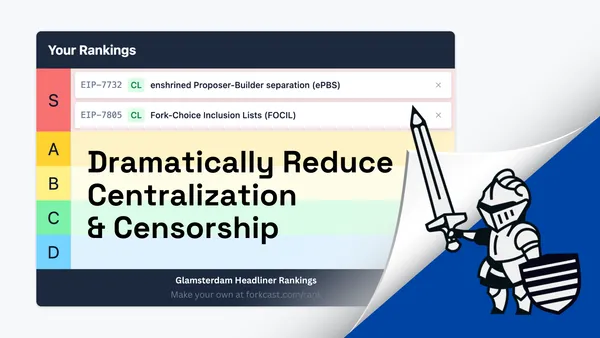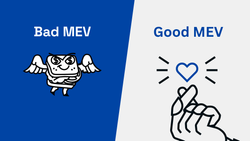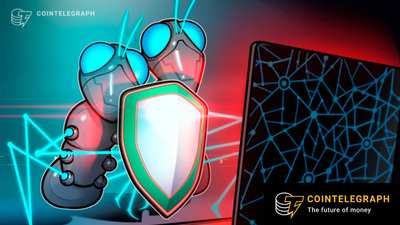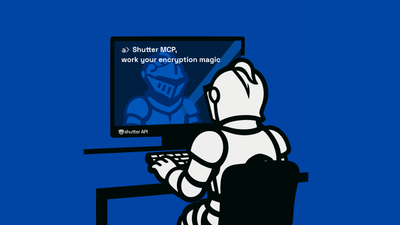Ethereum’s Glamsterdam upgrade, currently in the planning phase, is the next big network upgrade after Fusaka. It’s scheduled for 2026.
What makes Glamsterdam great is its open and collaborative planning process: core developers, researchers, and the wider community are currently evaluating which Ethereum Improvement Proposals (EIPs) should be included.
We’re following the process closely - and we believe two already popular EIPs deserve priority for their potential to make Ethereum more credibly neutral and resistant to manipulation:
- EIP-7732 – Enshrined Proposer-Builder Separation (ePBS)
- EIP-7805 – Fork-Choice Enforced Inclusion Lists (FOCIL)
Why Support ePBS and FOCIL
Ethereum’s transaction supply chain is riddled with centralization, most notable in the dominance of a few powerful builders and the reliance on trusted relays. This concentration of power introduces central points of failure, increases the risk of censorship, and creates malicious MEV extraction opportunities.
The EIPs ePBS and FOCIL directly address these issues by changing the block building process. They go to the heart of who controls Ethereum’s most critical infrastructure.
These two EIPs also integrate naturally with our work on encrypted mempools, which hide transaction contents until inclusion and prevent manipulation at the protocol level.
When combined, the three form what we described in our recent blog post as the Holy Trinity for Censorship Resistance: Eliminating trusted relays through ePBS, enforcing transaction inclusion with FOCIL, and introducing encrypted mempools together lay the groundwork for a censorship-resistant Ethereum.
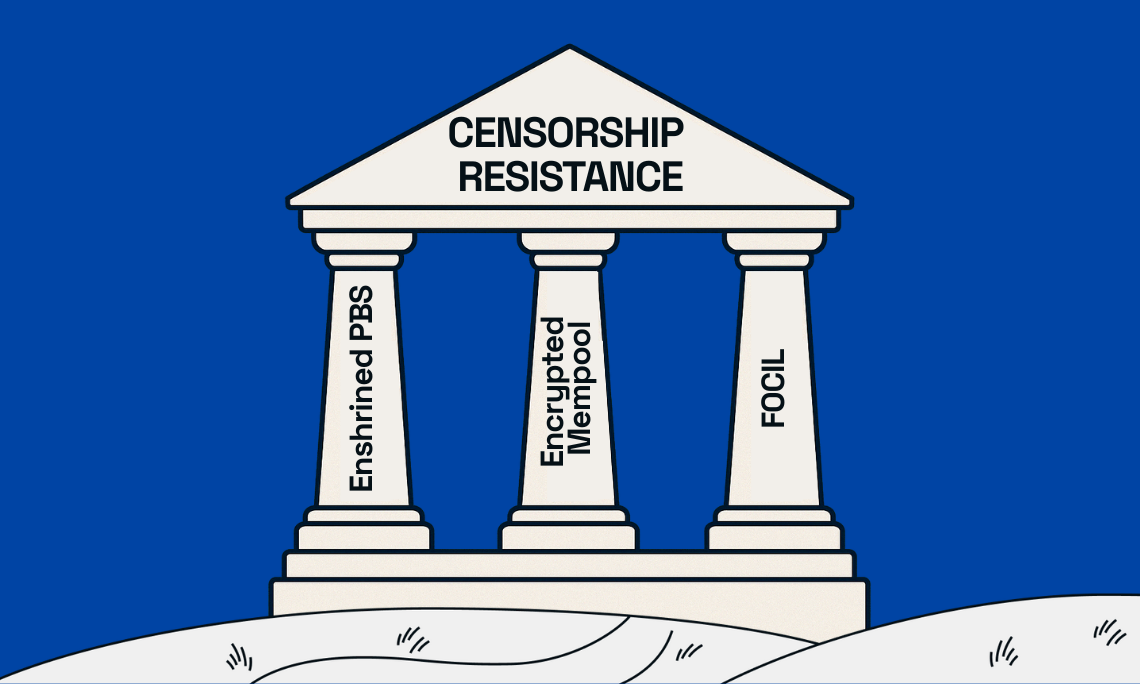
Together, these efforts move Ethereum toward a system where no single actor can censor, exploit, or control the transaction flow.
FOCIL (EIP-7805): Censorship Resistance Through Inclusion Lists:
In EIP-7805 (FOCIL) a committee of attesters jointly generate a list of transactions, which must be included into the next block, thereby restricting the block building process to a certain extent. This ensures that builders and proposers cannot exclude certain transactions indefinitely and thereby improves censorship resistance
ePBS (EIP-7732): Protocol-Level Proposer-Builder Separation
ePBS integrates PBS directly into the Ethereum protocol. This improves upon the current out-of-protocol PBS model by eliminating the need for trusted relays to mediate between proposers and builders. In ePBS, that coordination role is instead handled by a committee of attesters. Specifically, the builder first sends a commitment to its block to the proposer. If the proposer chooses to accept the block, it signs the commitment. Upon receiving the signed commitment, the builder reveals the full block payload, and the attester committee confirms that the payload was released as expected.
This approach improves decentralization by eliminating centralized relays, which today act as chokepoints and potential sources of censorship or manipulation. However, it also introduces a new challenge: the free option problem.
The Free Option Problem in ePBS - and a Cryptographic Solution It
Flashbots recently described the free option problem that comes with the design of ePBS. Specifically, builders can submit a commitment to a block but later choose not to release the block payload if it is economically advantageous to do so. This allows builders to observe market conditions and only reveal their block when it is profitable to do so. The result is a form of optionality that harms liveness and undermines the incentive structure of ePBS.
A more promising direction involves the use of threshold encryption, the cryptographic primitive used by the Shutter Network to implement encrypted mempools. In a 2022 talk, our colleague Jannik Luhn demonstrated how threshold encryption can be used to remove relays in PBS. Later Paradigm published a post on a similar idea but using a more advanced encryption scheme, the so-called silent threshold encryption (see below). The general idea is as follows:
- The builder encrypts the block to a set of decryption parties (Keypers) and generates a zero-knowledge proof showing that the ciphertext contains a block consistent with the commitment.
- The builder sends the ciphertext, zk proof, and commitment to the proposer.
- Once the proposer signs the commitment, the Keypers collaboratively decrypt the block and publish it.
This approach ensures that the builder cannot back out after the commitment is signed. However, it introduces a new trust assumption: the protocol must trust a fixed set of Keypers, who must coordinate to run a distributed key generation (DKG) protocol in advance.
Silent Threshold Encryption as a Solution
Silent threshold encryption is a threshold encryption scheme that avoids the need for interactive distributed key generation (DKG). Instead, each validator (or Keyper) independently generates its own key share and publishes a corresponding public hint. The combination of these hints allows others (e.g., builders) to encrypt messages that can later be decrypted by a threshold of Keypers, even though the Keypers did not coordinate in advance.
These properties make silent threshold encryption a strong candidate for addressing the free option problem in ePBS. It eliminates the need for an interactive DKG among the Keypers and allows the encryptor (i.e., the builder) to dynamically choose the set of Keypers to encrypt to. As a result, it significantly reduces the trust required in any fixed or pre-coordinated group.
We would like to note that, while not in the context of ePBS, Paradigm essentially described this approach in a previous blog post: using silent threshold encryption to remove relays in the current PBS supply chain.
What Glamsterdam Should Prioritize - And What Should Come Next
Glamsterdam should prioritize EIP-7732 (ePBS) and EIP-7805 (FOCIL)
Ethereum’s upcoming Glamsterdam upgrade represents an opportunity for a major step forward in strengthening the network’s core values of decentralization and censorship resistance. Key proposals like ePBS and FOCIL tackle longstanding issues around trust and censorship in the block-building process.
This is also the right time to move forward because the main concern with ePBS, the free option problem, has a clear path to resolution. Silent threshold encryption provides a compelling solution: it cryptographically enforces payload release after commitment, without requiring trust in a fixed committee. This makes it a strong candidate for inclusion in future protocol upgrades.
A future priority should be encrypted mempools, as developed by the Shutter Network
Encrypted mempools integrate naturally with ePBS and FOCIL and further enhance their benefits. They prevent frontrunning by hiding transaction contents until after inclusion - and when combined with FOCIL’s inclusion lists, they ensure that encrypted transactions cannot be silently dropped.
Together, these three components form a powerful triad that pushes Ethereum toward a more credibly neutral and fair transaction pipeline.


